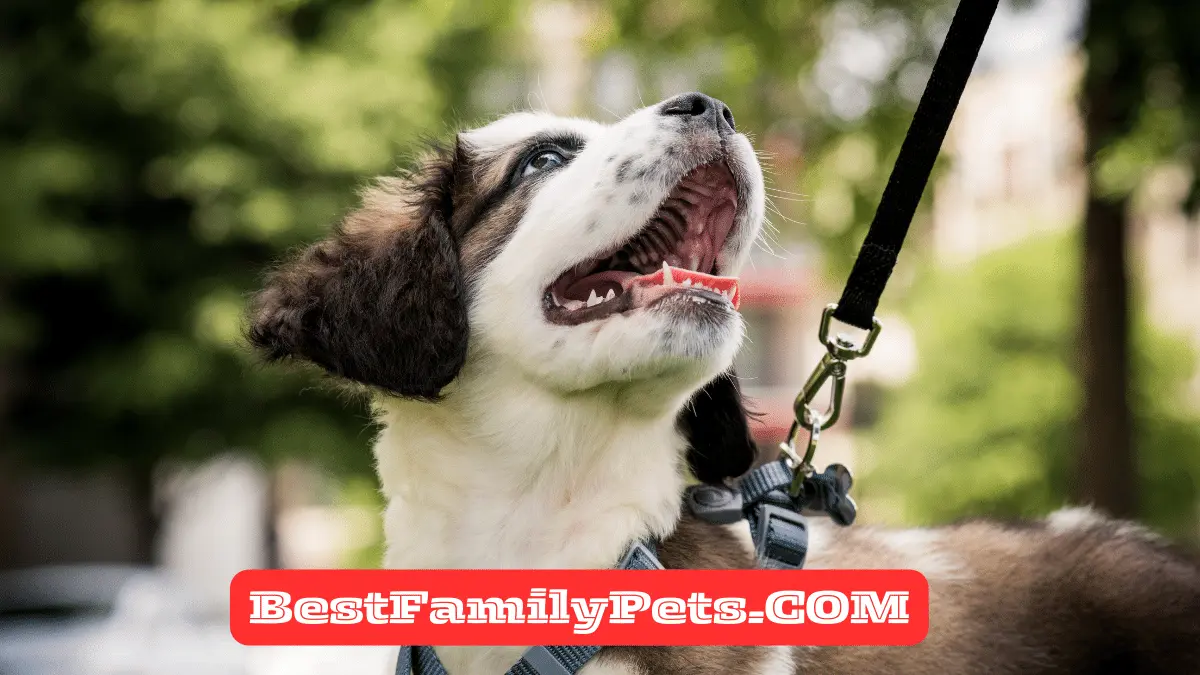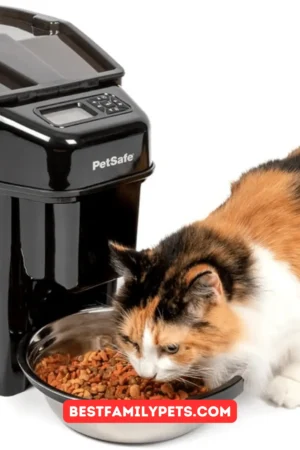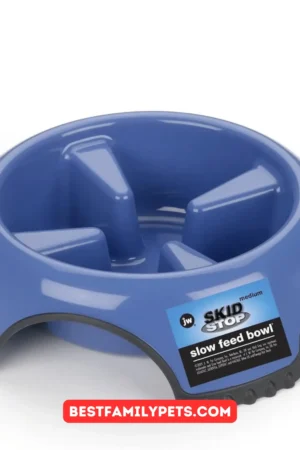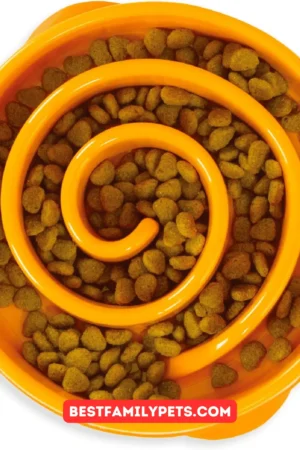5 Tips to Deal With Stinky Dog Breath
Combat stinky dog breath with our top 5 tips! Learn about dental hygiene practices, vet-approved products, and diet tweaks for fresher canine kisses.
There’s something special about the connection between humans and dogs. “Man’s Best Friend” has earned the title after thousands of years of service, loyalty, and companionship. Very few things can come between adoring pet owners and their pooches. Unfortunately, stinky dog breath has a unique way of testing the human-canine bond to the limit.
Many things can cause bad breath in dogs. Poor oral health and nutrient-poor dog food are two common options. Fido’s hair-curling aroma could also stem from an undiagnosed health condition. If you love your furry pal but have to hold your breath while you play together, here are five possible solutions to your problem.
1. Switch Dog Food
Many cheap brands aim to make their kibble more affordable by packing it full of fillers. These ingredients add bulk to the product but have little to no nutritional value. Some, such as butylated hydroxyanisole (BHA) may even be harmful to your dog’s health. This preservative is commonly found in low-quality dog foods and has been linked to cancer and reproductive disorders. If your pooch is struggling with bad breath and troubling health issues, the underlying cause might be a nutrient-poor diet.
You can switch to a better dog food brand to alleviate your pal’s symptoms. Your furry family member needs a balanced diet to maintain good health and energy, just as you do. Many pet owners find that fresh dog food makes a night-and-day difference for their pets. Look for a brand that includes nutrient-rich whole cuts of meat, vegetables, and whole grains. Then, pay attention to how much better your dog looks and smells after eating a healthier diet for a while.
2. Schedule a Dental Exam
If your breath was bad enough to scare off your family members, you’d probably schedule an urgent appointment with the dentist. And yet, too many dog owners brush off their pooch’s foul aroma as a natural part of being an animal. What they may not realize is that their pet’s breath shouldn’t smell bad enough to curdle milk. If it is, there’s probably something wrong with their oral health.
Your veterinarian can help your dog maintain good oral health with regular dental examinations and cleanings. Aim to get your pooch in for a dental appointment at least once per year. But if Fido’s breath takes a sudden turn for the worse, don’t wait until their regularly scheduled exam. Instead, see if you can get your pal in right away to find out what’s amiss and take corrective action.
3. Brush Your Pooch’s Teeth
If you stopped brushing your teeth for days or weeks at a time, your breath probably wouldn’t smell like roses. Similarly, you can’t be too surprised by your pooch’s bad breath if you fail to brush their teeth. Periodontal disease is the most common cause of halitosis in dogs. It can occur as the result of an overgrowth of bacteria from tartar buildup. Brushing your canine’s teeth regularly can help prevent this from happening.
When you begin a new teeth-brushing routine, start by rubbing a soft cloth or your finger over the outside of your dog’s teeth. As your furry family member gets used to this action, you can switch to a dog toothbrush with soft bristles. Choose the right size of brush based on your dog’s height and weight. You don’t need to invest in toothpaste. Simply wet the bristles with water and move the brush back and forth to get rid of plaque and food particles.
4. Provide Chew Toys and Dental Treats
The action of chewing on toys and dental treats is good for canine oral health. It can help remove food particles and prevent plaque buildup. Dental treats also contain ingredients that can freshen your dog’s breath. When introducing a new dental treat to your pet, be cautious. Some dogs are sensitive to the ingredients found in dental chews, so introduce them gradually to test your dog’s reaction.
Not all canine dental chews and oral health products are created equal. Some work better than others to safely freshen Fido’s breath. If you feel overwhelmed by the rows of dental products at your local pet store, feel free to refer to this list. It shows the different dental products that are recommended by the Veterinary Oral Health Council.
5. Check for Diseases
What if your pooch still has terrible breath despite all your interventions? Persistent halitosis could be an indication of an undiagnosed health issue. Diabetes, kidney disease, liver disease, and oral tumors can all cause bad breath. If your pet has any of these health conditions, prompt diagnosis and treatment are essential.
Regular visits to your vet can be helpful for diagnosing diseases early on. But your vet isn’t privy to all the things you see on a day-to-day basis as a dog owner. Therefore, if you have noticed any changes in your pet besides bad breath, be sure to mention them. For example, if your pooch’s dietary or bathroom habits, energy levels, or sleeping patterns have changed, let your vet know.
If you’re like most loving dog owners, you’d do anything for your furry friend. Now that you know bad breath could be an indication of a nutrition deficiency or health problem, don’t ignore it. Instead, use the tips above to freshen your canine’s breath while boosting their overall health in the process.
You can also like these:
-

7 Essential Cleaning Tips for Pet Owners
There’s no doubt that our little furry friends enrich our lives in so many ways. However, keeping up with their messes is no small chore. In order not to let things get out of hand, we’ve compiled a comprehensive list of 7 essential tips for cleaning after your favourite pets. By dedicating just a few…
-



The Importance of a Dog Leash
Choosing the right dog leash for your dog is a necessity for their safety, comfort, and identification.
-



The 12 Best Dog Bowls of 2024 for Dachshunds: How to Choose the Right One
best dog bowls for miniature dachshunds, Dachshund, dachshund food and water bowls, Dog Bowls, food bowls for dachshunds, Should Dachshunds have raised bowls?, Should dogs eat off the floor?By considering the options and factors outlined in this article, you can find the perfect bowl to keep your Dachshunds healthy and happy.
-



Review: PetSafe Simply Feed Automatic Feeder
Are you a busy pet parent who struggles to maintain a consistent feeding schedule for your furry friend? The PetSafe Automatic Feeder might is here.
-



Review: JW Pet Skid Stop Slow Feed Bowl
Does your dog inhale their food in seconds flat? If so, you might be interested in trying a JW slow feeder bowl.
-



Review: Dogit Slow Feeder Dog Bowl
Does your furry friend devour their meals in a flash? If so, you might want to consider a Dogit slow feeder bowl.
-



Review: Outward Hound Fun Feeder Slo Bowl
Does your dog inhale their food in seconds flat? If so, you might be interested in trying a slow feeder bowl.
-



Review: NMN Products Raised Dog Bowls
NMN Products offers a selection of raised dog bowls known for their stylish designs and focus on pet comfort.
-



Review: Pet Zone Adjustable Elevated Pet Feeder
The Pet Zone Designer Diner Adjustable Elevated Pet Feeder aims to elevate your pet’s mealtime experience in both form and function.
-



Review: FOREYY Raised Pet Bowls for Small and Medium Dogs
Looking for a simple and affordable way to elevate your small or medium dog’s mealtime? The FOREYY Raised Pet Bowls might be the perfect option for you.
-



Review: PetFusion Elevated Dog Bowls
Looking for a stylish and functional way to elevate your pup’s mealtime? Look no further than PetFusion’s Elevated Dog Bowls!
-



Belgian Malinois Pitbull Mix: Loyal, Energetic & Smart
Belgian, Belgian Malinois, Belgian Malinois Pitbull Mix, Belgian Shepherd, Belgian Shepherd Malinois, Pitbull MixDiscover the loyal, energetic, and smart traits of the Belgian Malinois Pitbull mix. Learn more about this unique breed blend today! #belgianmalinoispitbullmix
-



Overview of DNA Testing for Belgian Malinois Dogs
Unleash insights about your Malinois! Explore “DNA dog test for Belgian Malinois” to discover breed, health & behavior traits.
-



Adopting a Puppy/ What you need to know
You have chosen your puppy from a litter, at a reputable Breeders. Soon you will be ready to bring him home it is time to get a few things that you are going to need before his arrival. What age can your Puppy come home? Dogs are not able to eat solid food until they…
-



The Ultimate New Puppy Checklist
Welcome your furry friend prepared! Our ultimate Puppy Checklist covers essentials from supplies to training tips. Get it all right here.
















